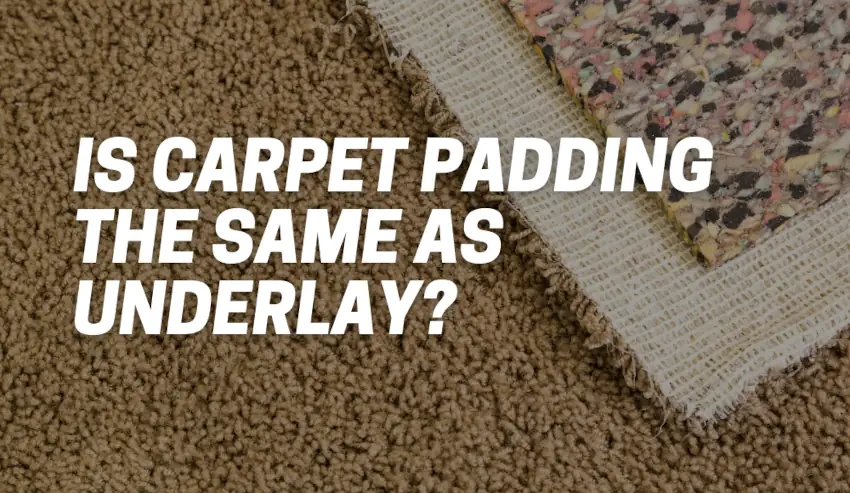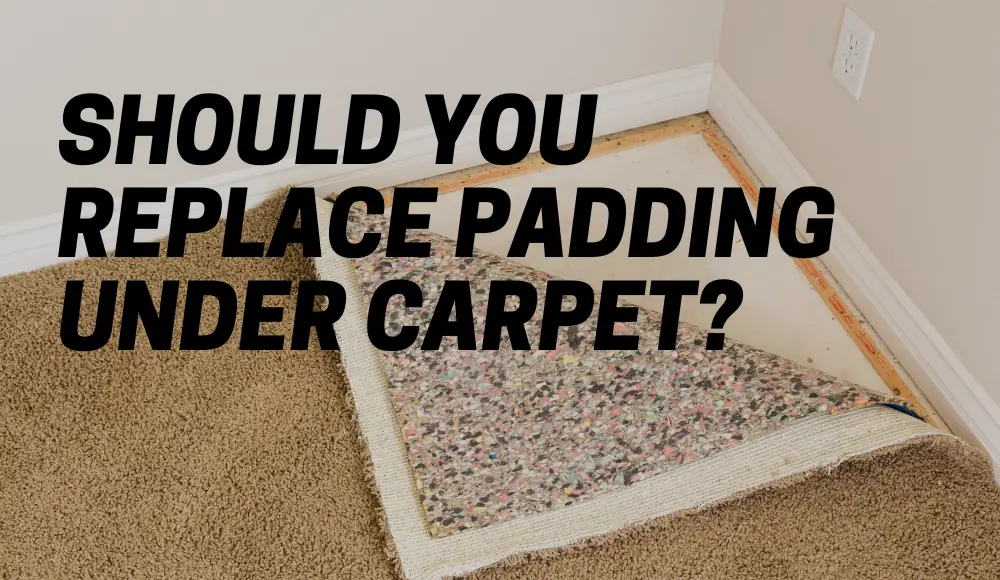Last updated on October 29th, 2023 at 03:12 am
When it comes to transforming your home’s interior, few things compare to the cozy comfort and aesthetic appeal of carpets. Whether you’re revamping your living room or reimagining your bedroom, carpets add a touch of warmth and elegance.
However, beneath the soft exterior lies a crucial element that often goes unnoticed – the support system that ensures your carpet’s longevity and your comfort.
In this article, we’ll dive into the world of carpet padding vs underlayment, unraveling the differences, clarifying misconceptions, and helping you make an informed choice for your home.
What is Carpet Padding Called Mostly?
Before we delve into the details, let’s address the naming conventions.
You might have heard the terms “carpet padding” and “underlayment” used interchangeably, causing some confusion. Carpet padding is more commonly referred to underpad or carpet pads. Underlay finds its place beneath new flooring, whereas underpad is positioned beneath carpets.
What is the Difference Between Underlay and Underpad?
To truly understand the nuances of carpet underlayment, it’s essential to differentiate it from its close counterpart, carpet underpad. Both serve the purpose of enhancing the performance of your carpet, but they cater to distinct needs.
Underlayment is a comprehensive term that encompasses various materials, such as foam, rubber, or fiber, which are installed between the subfloor and the carpet. Its primary function is to provide stability, reduce noise transmission, and offer insulation. As mentioned earlier, underlayment is typically placed beneath fresh flooring installations, whereas underpad finds its position beneath carpets.
Think of underlayment as the foundation that supports your carpet or flooring, ensuring it remains level and free from wear and tear caused by subfloor irregularities.
On the other hand, underpad or carpet padding refers to the cushioning layer placed directly under the carpet itself. This layer provides additional comfort underfoot, making your carpet soft and inviting. It absorbs impact, reduces foot fatigue, and enhances the overall luxurious feel of your carpeted space.
In essence, underlayment focuses on structural integrity, while underpad prioritizes comfort and aesthetics.
Advantages of Underlayment and Underpad: A Comparison
Here’s a quick breakdown of the benefits offered by underlayment and underpad:
Underlayment:
- Structural Support: Underlayment provides a stable surface for your carpet, ensuring it wears evenly and lasts longer.
- Noise Reduction: By acting as a buffer, underlayment minimizes the sound of footsteps and absorbs airborne noises, creating a quieter environment.
- Thermal Insulation: It helps regulate temperature and conserves energy by providing an extra layer of insulation.
Underpad (Carpet Padding):
- Comfort Underfoot: Underpad adds a luxurious cushioning effect, making your carpeted areas comfortable for walking, sitting, or lying down.
- Impact Absorption: It protects the carpet from the impact of foot traffic, which prolongs the carpet’s lifespan.
- Enhanced Aesthetics: Underpad enhances the overall look of your carpet by preventing wrinkles, creases, and uneven wear patterns.
FAQs:
What Happens If You Don’t Put Padding Under Carpet?
Skipping the underpad can lead to several issues. Without proper cushioning, your carpet will wear out faster, losing its plushness and comfort.
- Additionally, without underpad, your carpet might not lie flat, leading to wrinkles and unevenness.
- Lastly, the absence of underpad can contribute to increased noise and reduced insulation, impacting the overall quality of your carpeted space.
Conclusion
Understanding the distinctions between underlayment and underpad (carpet padding) is crucial when considering the installation of a new carpet. While underlayment provides structural support and insulation, underpad enhances comfort and aesthetics.
Each has its own set of advantages, and together, they contribute to a long-lasting, visually appealing, and comfortable carpeted space. So, when you’re ready to upgrade your home’s interior, remember the role that these unsung heroes play beneath your feet.



